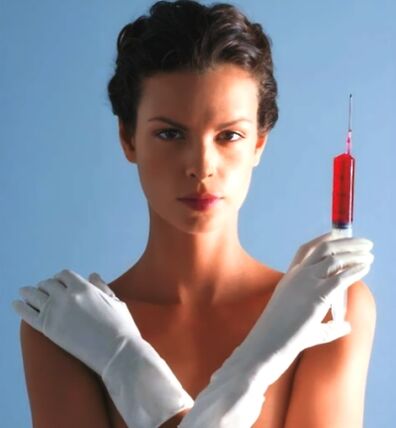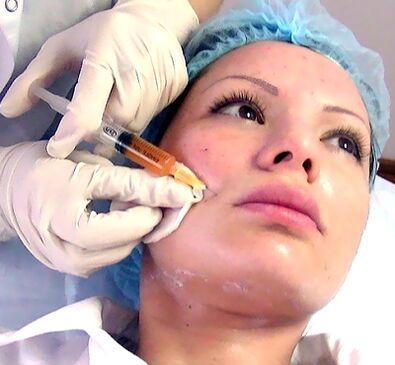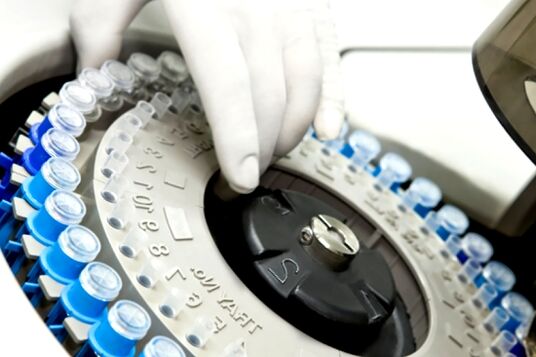Now it is fashionable to dress well, young and beautiful. But youth is a passing phenomenon, and since we want to keep it for as long as possible, estheticians give us this opportunity by developing, presenting and applying techniques, procedures. Latest, most effective rejuvenation. But a person who wants to prolong youth and beauty, rejuvenate his skin and appearance, should choose from among the numerous modern cosmetic procedures? This article reveals in detail the essence of one of the newest techniques - plasmolifting, talking about its safety and high efficiency.
What is Plasmolifting?

Human blood contains a great potential that can stimulate all the resources of the body, which is essential for it in the fight against aging and age-related changes, rejuvenating the skin. skin and general tissue repair. And the plasmolifting procedure contributes to the highly efficient, expressive disclosure of all this potential. What is Plasmolifting?
Plasmolifting is a cosmetic procedure, a non-surgical technique that performs skin rejuvenation, activating tissue regeneration in the human body. This is the latest method that has revolutionized the cosmetic industry. The basic principles and ideas of this technique, like all ingenuity, are very simple. This cosmetic procedure, its key concepts are based on the recovery of the patient's platelet-rich plasma. The resulting plasma will be injected into the problem areas. Thanks to such injections, the human body receives a powerful impetus to activate natural processes of rejuvenation and regeneration.
The stimulating property of such platelet-rich plasma ensures the formation of skin cells from stem cells, normalizes metabolism, forms hyaluronic acid molecules, stimulates blood circulation and hyperplasiaproduction of elastin and collagen. Rejuvenation of the skin and deeper subcutaneous tissues begins.
This cosmetic procedure has many other synonyms, for example, ACR - autologous cell rejuvenation, autologous skin rejuvenation, autoplasma skin therapy, plasma resurfacing, plasma biorevitalization, youngdermatology, plasma biology, "draculotherapy".
The partial plasmolifting procedure is similar to biological therapy, as it uses the patient's biomaterial for injection, thus ensuring the fullest compatibility of the biological components and eliminating the possibility of complications. as an allergic reaction.
Plasmolifting, similar to a cosmetic procedure called ReGen Lab, developed by Swiss specialists, also rejuvenates the skin and subcutaneous tissues. But it is a more expensive procedure and requires expensive hardware.
History of the appearance of plasmolifting
The early precursors of this approach included autochemotherapy (infusion of the patient's blood from a vein into the gluteal muscle to stimulate the body's protective function), which has been used medicinally for over a hundred years. , as well as plasma. therapy, a method of treating certain diseases by injecting plasma into a vein.
The first experiments aimed at rejuvenating human skin and just before the advent of plasmolifting were performed in the US decades ago. As a result of these studies, a cosmetic procedure called PRP (Plateled Rich Plasma) therapy emerged. And the plasmolifting procedure is considered a modification of PRP therapy; It was patented by experts in 2004.
Mechanism of influence
Platelets, in addition to the main function - to accelerate blood clotting, also have the ability to secrete growth factor proteins that stimulate cell division and growth. After an injury, platelets often accumulate near the wound, starting the process of stopping bleeding, as well as restoring the damaged area.
To force cells to renew themselves artificially, thus inducing skin rejuvenation, one should inflict a small wound, such as during a chemical peel, or fool the patient's body withhow to deliver platelets to the desired area. Such an action will serve as a signal to initiate regeneration processes.
As a result, platelet-rich plasma when injected into the right area of the skin will help restore skin cells. Fibroblasts (connective tissue cells) begin to efficiently produce elastin, collagen and hyaluronic acid, the formation of new skin cells is also accelerated, and skin rejuvenation takes place.
Range of plasmolifting
The plasmolifting procedure is mainly popular in the field of cosmetology. High efficiency and quick, painless skin rejuvenation are her credit. But this cosmetic procedure is also successfully used in triads, as an effective way to combat baldness and hair loss. After a few transplants, the hair structure is restored, their shedding stops and healthy hair growth begins. To treat hair loss and baldness, 2 to 10 sessions of plasmolifting may be needed, depending on the general condition of the hair.
Plasmolifting is successfully used in dentistry to accelerate implant placement and treat periodontitis.
Indications for plasmolifting

The plasma filling procedure has the following indications to perform:
- peeling and dry skin;
- prevents the appearance of stretch marks with noticeable weight loss;
- age over 25. Imitation and small wrinkles - age over 35;
- violation of the basic properties of the skin due to weight loss;
- the main signs of skin sagging, loss of firmness, elasticity;
- accelerate skin tissue regeneration after laser and chemical peels;
- acne and other dermatological diseases;
- age-related elastosis, "gray" skin;
- restore skin after strong exposure to UV rays (tanning due to sun, sunbathing);
- sparse dull hair;
- baldness and dandruff;
- Repair the bad effect of Botox injection.
Contraindications for plasmolifting
The grafting procedure has the following contraindications to its implementation:
- psychosis;
- severe sagging skin;
- blood diseases;
- immune disorders;
- Chronic diseases;
- exacerbations of various chronic diseases;
- diabetes in severe form;
- diseases of the patient's various internal organs;
- allergy to anticoagulants used in the manufacture of injections;
- menstruation;
- cancer;
- decrease in fibrin in the blood;
- abnormal and dysfunctional platelets, low platelet count (less than 100, 000 per 1 µl);
- low hemoglobin (level less than 100 g per 1 liter);
- fever, high temperature;
- pregnancy;
- the use of antibiotics;
- lactation period;
- antiplatelet therapy;
- use less than two days before the procedure NSAID (non-steroidal anti-inflammatory drug), eg, aspirin, analgin;
- injection site dermatitis.
This cosmetic procedure has the following major limitations for the patient prior to it being performed:
- ban on going to the solarium;
- a ban on getting a natural tan;
- ban on visiting swimming pools and saunas.
Plasmolifting procedure: done

Before starting the procedure, it is recommended to undergo several examinations: biochemical and clinical blood tests, blood tests for the presence of infectious diseases. The blood is then drawn from the patient's vein into a test tube containing the separation gel and anticoagulant. The volume of blood taken depends primarily on the individual and biological characteristics of the patient. Usually it is about 10-20 ml. Then, using a special centrifuge, the blood is divided into three parts:
- cellular composition (white blood cells and red blood cells);
- platelet-rich plasma (about 1 million per 1 l);
- platelet-poor plasma (less than 150, 000 per 1 l).
Platelet-enriched plasma is injected using microinjection into problem areas, which have previously been treated with an antiseptic solution. Once introduced, the fibroblasts were placed along the Langer line (a line of natural age-related elongation). In the process of stimulating the formation of elastin and collagen, tightens the skin. The microinjection technique is generally similar to intermediate therapy.
If necessary, the skin can be numbed with a special cream. At the end of the procedure, the areas where plasmoli grafting was performed are again treated with a disinfectant. During the first 3 days after plasmolifting, patients typically experience redness and peeling of the skin, as well as slight darkening. Small wrinkles may appear on the surface layer of the skin. It usually goes away after three days.
The duration of the procedure usually ranges from 40 to 50 minutes. The basic plasmolifting course is 4 sessions with a frequency of 1 session in one to two weeks. And to maintain and consolidate the obtained effect, it is necessary to repeat about 2 rounds of plasmolifting every year.
To prevent unpleasant side effects, the authors of plasmolifting are prohibited from further modifying the method, for example, by adding other ingredients, vitamins, to the platelet-rich plasma.
The plasma skin rejuvenation procedure has the most important advantage over other cosmetic procedures - over time, collagen production is stimulated, the overall condition of the skin is improved, skin rejuvenation continues for several days. next month, up to one year included.
Plasmolifting procedure: effective
In 40% of cases, the effect is noticeable almost immediately after grafting. In all other cases, this cosmetic procedure is performed not immediately, the results appear after about 2 weeks. To achieve a more pronounced, better effect, experts recommend several procedures. After that, the skin rejuvenation of the treatment area will be very noticeable. The results of the procedure can last up to two years.
The effect obtained can be compared with chemical peels of the neck and face: it becomes more youthful, more elastic, the color is improved, fine lines are reduced. The most noticeable result after the procedure is the "porcelain skin" effect - the skin becomes very smooth, soft, smooth, as if it were glowing from within. The plasmolifting procedure is only effective at the first signs of age-related changes and skin aging. Only then can its application effectively rejuvenate the skin. If there are deeper wrinkles or the oval face is not clear, this cosmetic procedure will not give good results.
Below are the average recommended times of a plasma lift, as well as the results obtained for the following most common skin problems:
- skin ptosis. Result: increased skin tone and skin tone. 4-6 sessions 1 session in 7 days.
- Wrinkle. The result: a reduction in the depth and number of wrinkles, a delay in age-related changes. 4-6 treatments for 1 session every 7 days.
- Take a photo. The result: removal or reduction of hyperpigmentation, imaging. 4-6 treatments for 1 session every 7 days.
- Tired skin. The result: reduce dark circles under the eyes, swelling, as well as improve skin tone, increase local immunity to the skin. 2-4 treatments, 1 time every 7 days.
- Problem skin. Result: reduced manifestations of acne, improved skin condition, pain relief. 4-6 treatments for 1 session every 7 days.
- Dry skin. Nutrition and hydration, activate metabolism. 2-4 treatments, 1 time every 7 days.
- Hair loss, baldness. The result: inhibits the dying process of hair follicles, activates hair growth. 4-6 treatments for 1 session every 7 days.
- Dry, thin hair. The result: enhanced blood supply and nutrition to the hair follicles, restoration of hair structure. 2-4 treatments 1 session every 7 days.
- Dandruff, oily scalp problem. Normalizes the activity of the sebaceous glands, eliminates dandruff. 4-6 procedures 1 session every 7 days.
Plasmolifting procedure: safe
Plasmolifting is an absolutely safe cosmetic procedure that provides an almost painless skin rejuvenation effect without serious complications later on. Platelet-rich plasma injection is not immunologically active and non-toxic, since, as mentioned above, this plasma is obtained from the patient's blood without the need for additional substances and drugs. Since the plasma rejuvenation process helps to activate the latent resources in the body, skin rejuvenation does not cause any rejection reaction. Minor complications may occur, such as skin spots, redness, necrosis, hypopigmentation. In addition, this cosmetic procedure does not have a recovery period. It should be noted that such complications are theoretically possible, but the chance of them occurring is extremely small.
Combined with other procedures
The plasmolifting procedure is perfectly combined with other cosmetic anti-aging procedures, such as all types of peels and laser resurfacing. Skin rejuvenation will then manifest itself most effectively. In addition, this cosmetic procedure is perfect for preparing the skin before cosmetic surgery and improving the condition and appearance of the skin during the post-surgery recovery period. To get the most out of plasmolifting, it can be combined with other laser procedures:
- hyaluronoplasty using lasers prepares the skin for increased hyaluronic acid content;
- laser photothermolysis will allow you to consolidate the results obtained from plasmolifting;
- Combined laser will enhance the rejuvenation effect.
Plasmolifting procedure: cost
The plasmolifting procedure itself is low-cost, since the patient himself is the provider of the platelet-rich plasma, the centrifuge does the job of dividing the blood into small fractions, and injection of the resulting drug can be performed. performed by a beautician trained in chiropractic. injections. The main component of the price of the grafting procedure is intellectual property. But this cosmetic procedure is not too expensive.
The total cost is formed by taking into account the number and area of the treated areas.





































































